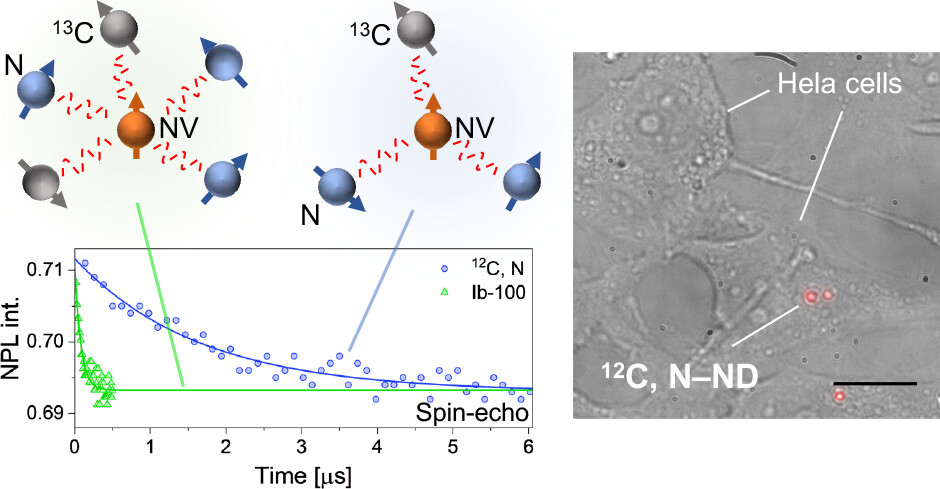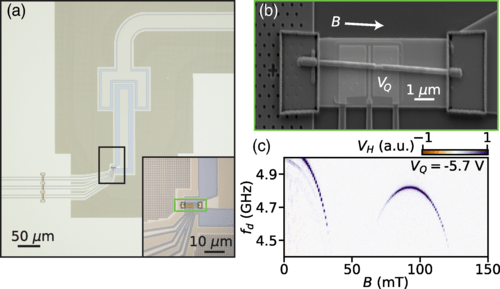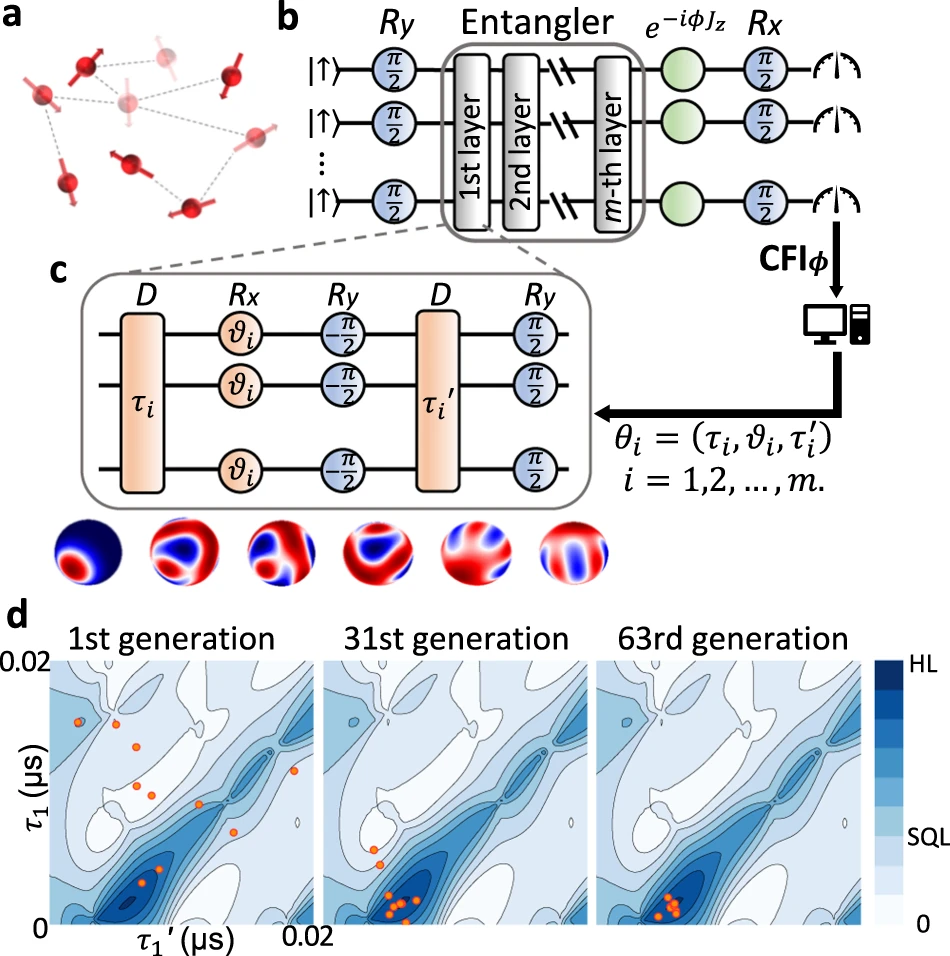Japanese researchers have achieved a significant advancement in quantum sensing technology by developing nanodiamond sensors that combine excellent brightness for bioimaging with quantum-grade spin properties comparable to bulk diamonds. This breakthrough, published in ACS Nano in December 2024, was led by Research Professor Masazumi Fujiwara at Okayama University in collaboration with Sumitomo Electric Company and the National Institutes for Quantum Science and Technology.
The innovation centers on NanoDiamonds (NDs) containing Nitrogen-Vacancy (NV) centers, which are quantum systems formed when nitrogen atoms replace carbon in the diamond lattice near a vacancy. These NV centers emit photons that carry stable spin information and respond to various external factors, making them valuable for quantum sensing applications. However, traditional NDs used in bioimaging typically suffer from poor spin quality, limiting their effectiveness.
To overcome these limitations, the research team developed a sophisticated production process. They grew single-crystal diamonds using 99.99% pure 12C carbon atoms and precisely controlled nitrogen introduction (30-60 parts per million). The resulting NDs, with a mean size of 277 nanometers, demonstrated exceptional properties: strong fluorescence with a photon count rate of 1500 kHz, and significantly improved spin characteristics requiring 10-20 times less microwave power for operation.
The enhanced performance was evident in several key metrics. The NDs exhibited longer spin relaxation times (T1 = 0.68 ms, T2 = 3.2 µs), 6 to 11 times better than conventional type-Ib NDs. When tested in biological environments using HeLa cells, the sensors maintained their effectiveness despite cellular movement. They also demonstrated superior temperature sensing capabilities, achieving a sensitivity of 0.28 K/√Hz.
These improvements address critical challenges in quantum biosensing, particularly the need for stable quantum states that can be detected with minimal microwave radiation, reducing potential cellular damage. The technology shows promise for various applications, from early disease detection through biological sensing to monitoring battery health and improving thermal management in electronic devices.
This breakthrough represents a significant step forward in quantum sensing technology, offering potential transformative applications across healthcare, technology, and environmental management. As Professor Fujiwara notes, these advancements could lead to substantial improvements in quality of life and provide sustainable solutions for future challenges.
Reference: “Bright Quantum-Grade Fluorescent Nanodiamonds” by Keisuke Oshimi, Hitoshi Ishiwata, Hiromu Nakashima, Sara Mandić, Hina Kobayashi, Minori Teramoto, Hirokazu Tsuji, Yoshiki Nishibayashi, Yutaka Shikano, Toshu An and Masazumi Fujiwara, 16 December 2024, ACS Nano. DOI: 10.1021/acsnano.4c03424




